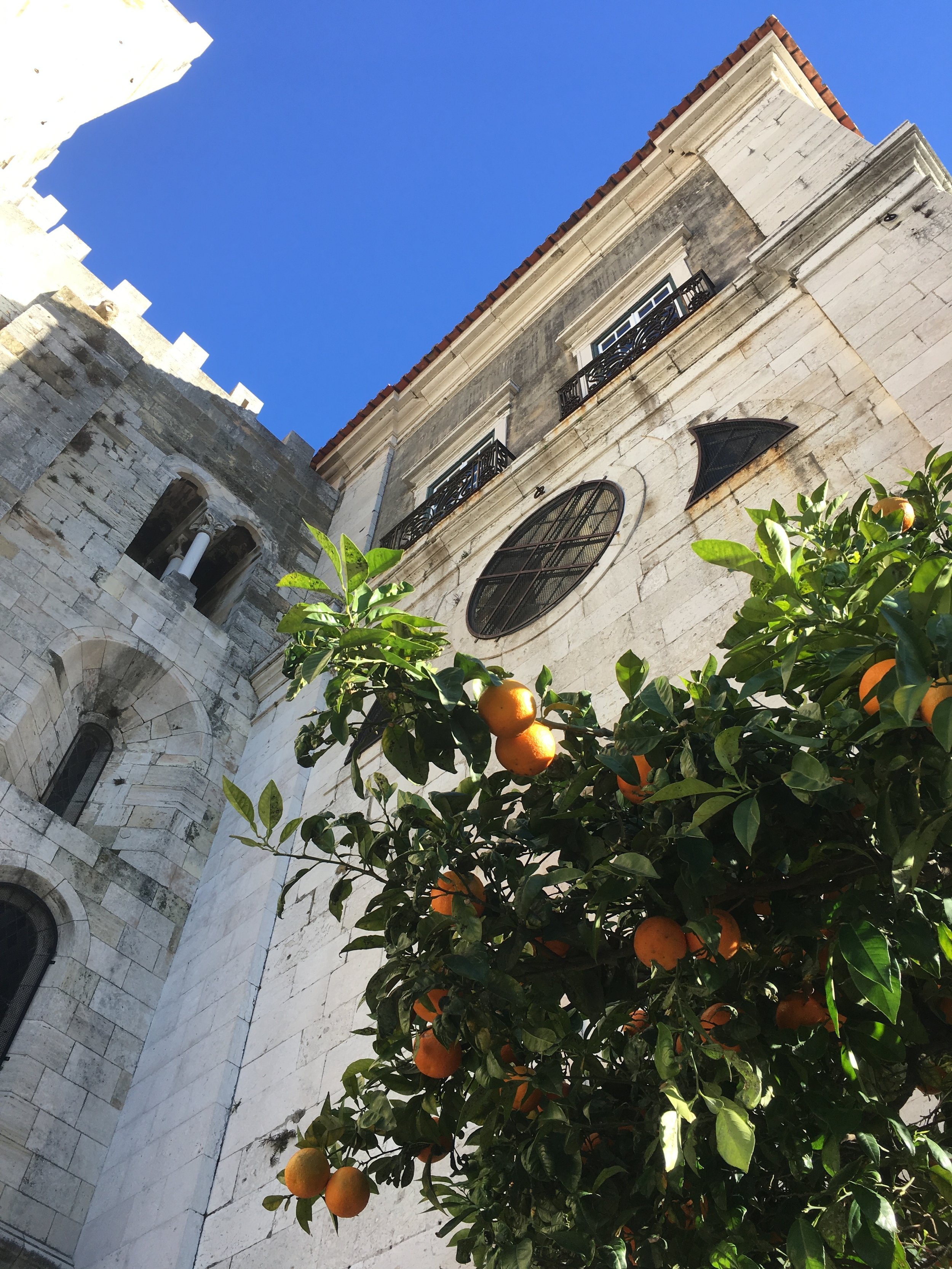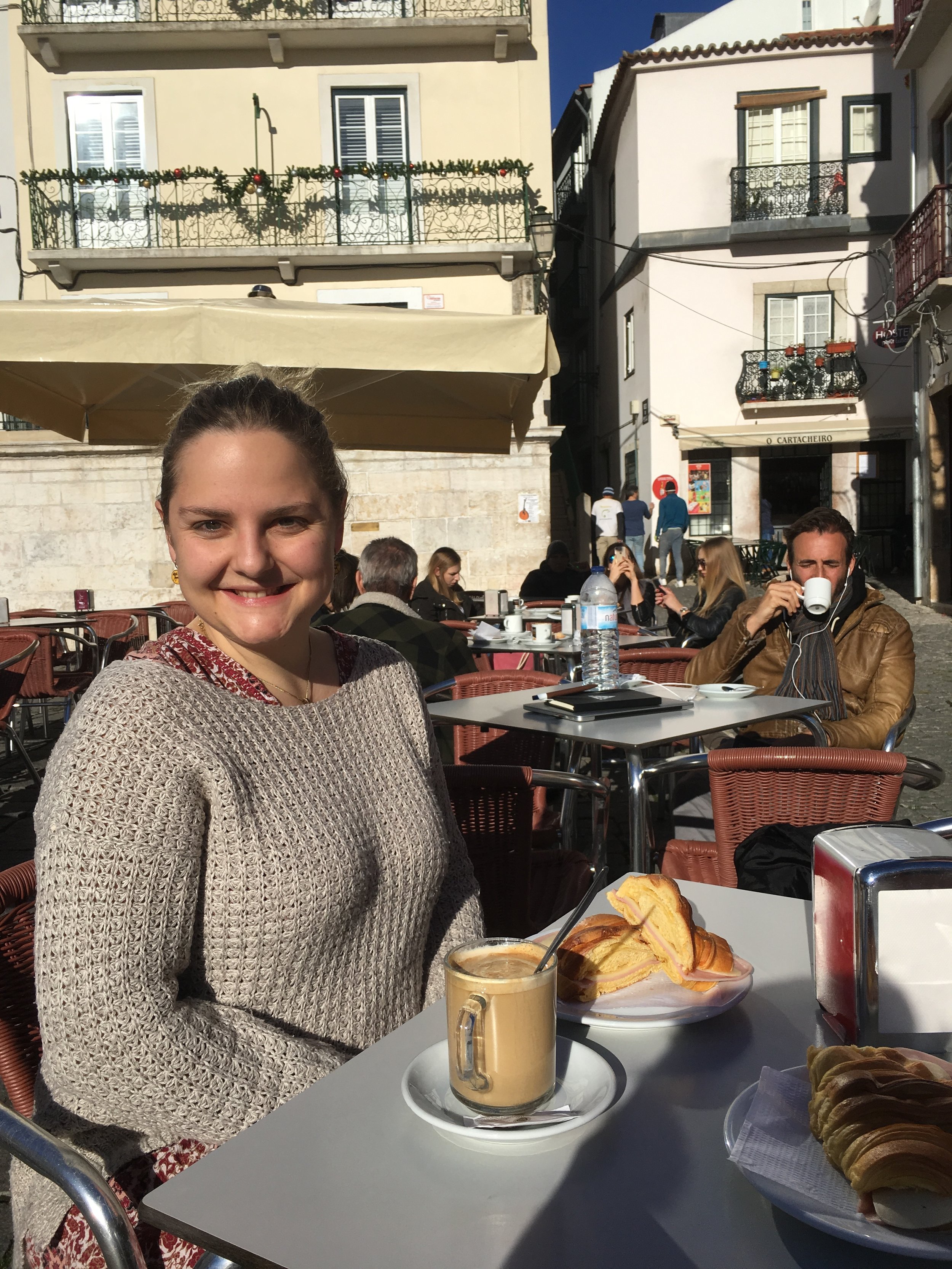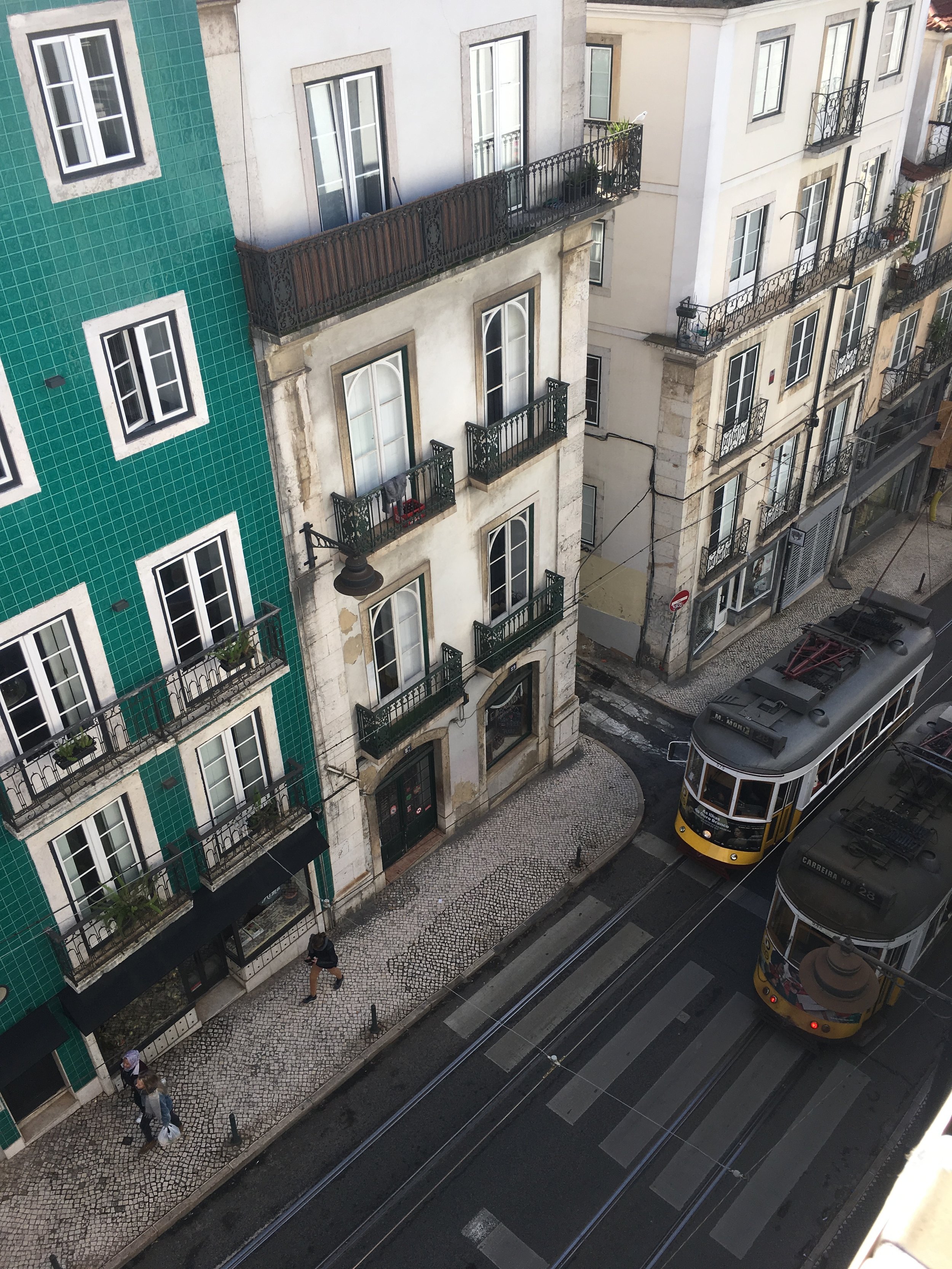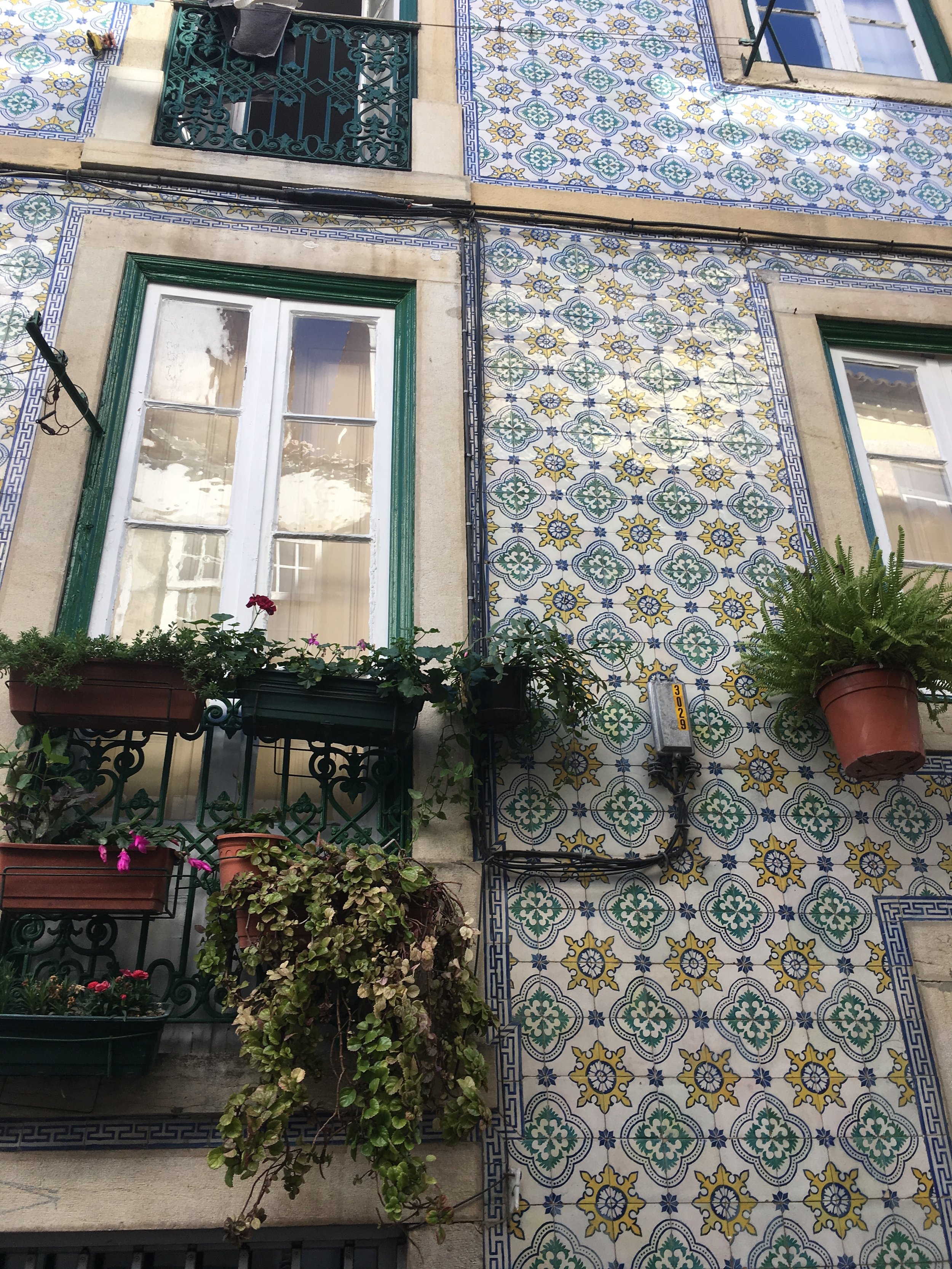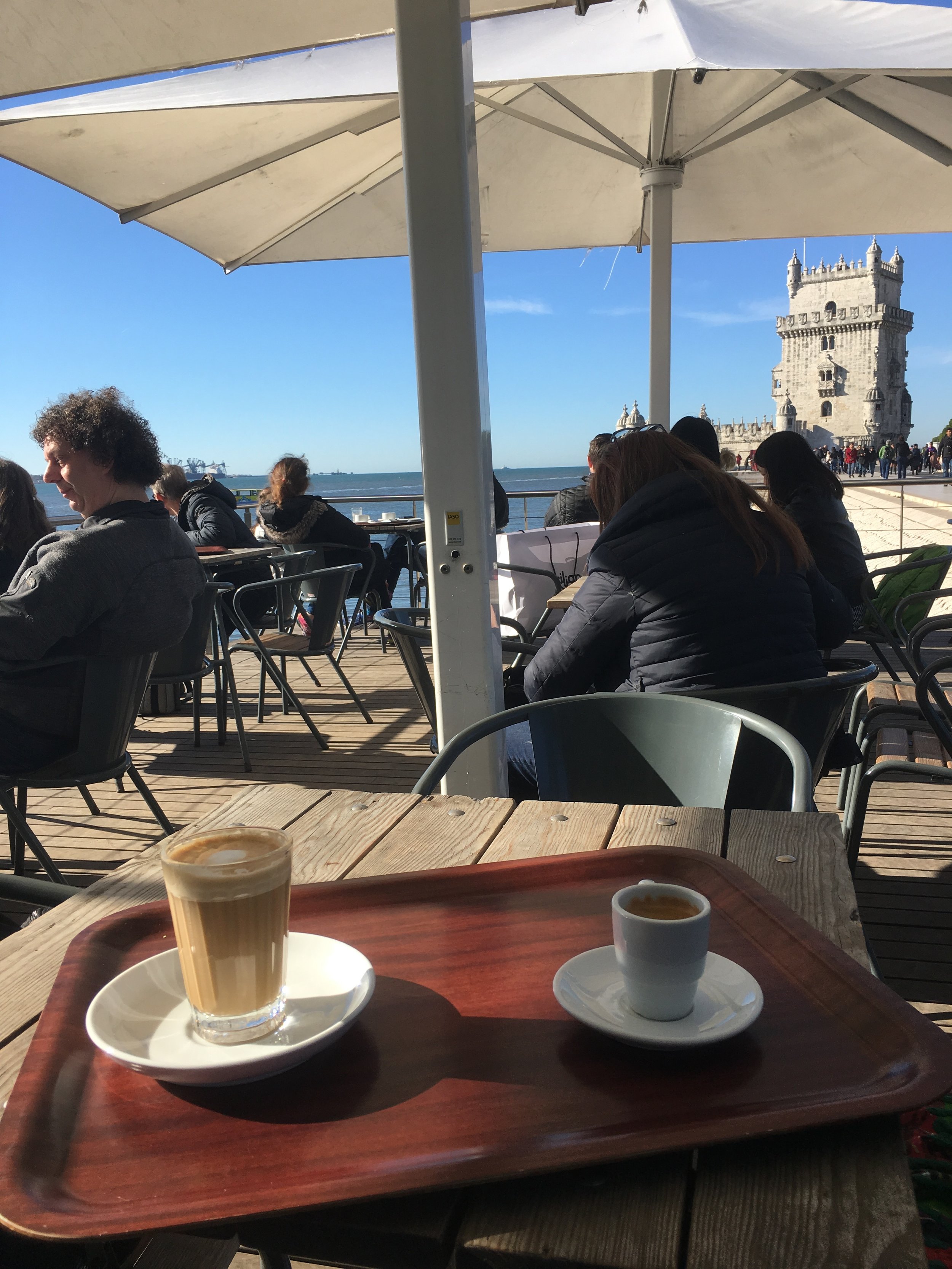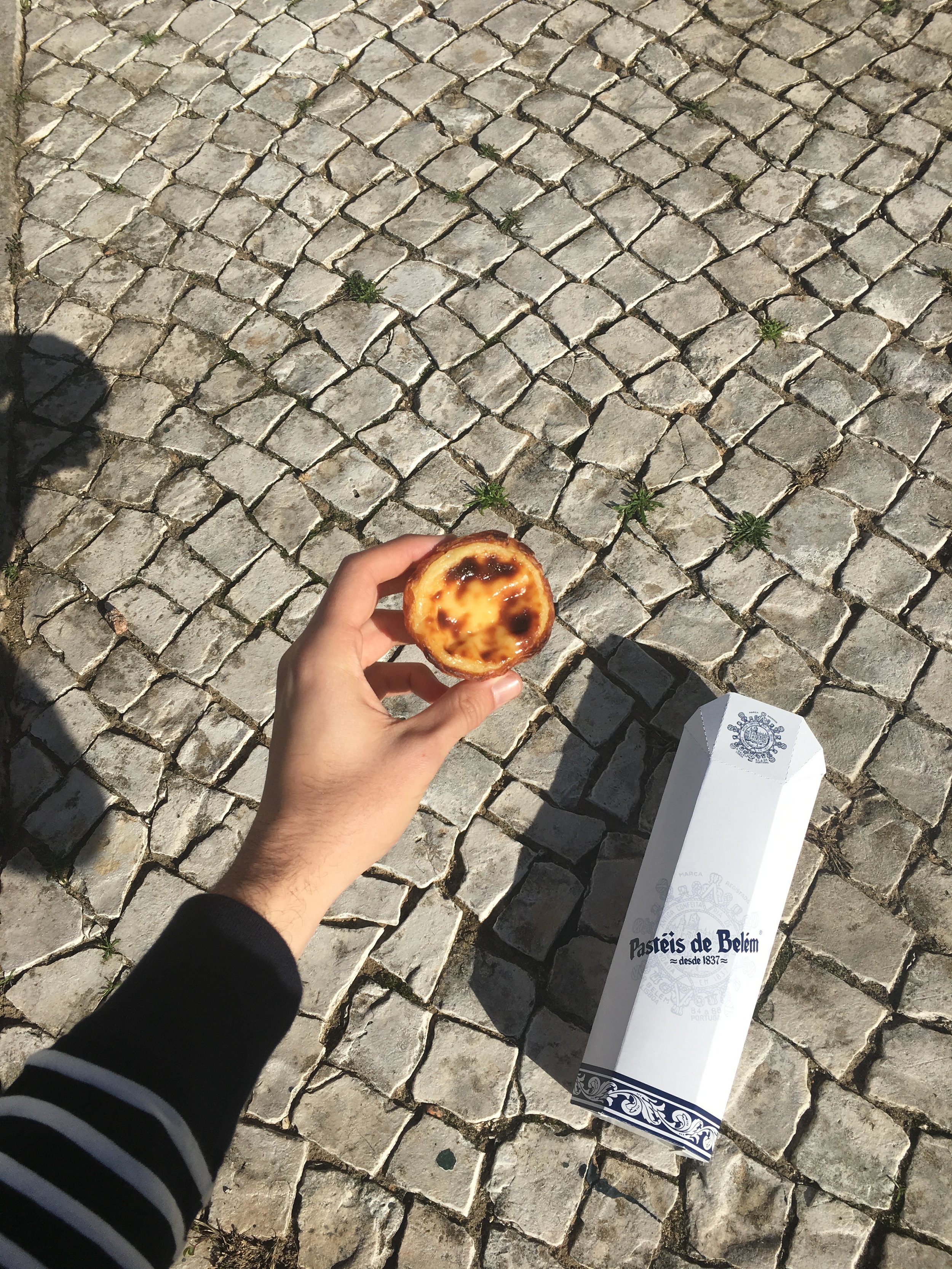an american in lisbon
the first in a series
by Tavis Gray
On my second night in Lisbon, my travel-mate Lisa and I ate in a cute cellar-styled restaurant in Alfama. We sat down and enjoyed the feeling for the first time after several hours of hill-climbing and cobblestone-tripping. We ordered, Lisa spoke in Portuguese as I admired the tiles along the stairs to the door. It was tranquil. But we soon discovered we weren’t the only tourists in the four-table restaurant.
Enter stage right:
“Seriously, where is everyone?” non-sotto-whispered an American man wearing a beanie indoors.
“Honestly. It’s dead. The place is dead.” answered his companion, a woman from I would guess Ohio.
They then signaled the waiter. He responded, his feet dragging in a bit of obvious pain at being included.
“Yes?” as kindly as he could.
She drew in her breath, preparing to say something she had clearly thought up earlier in the day, but wished to gift this room with now.
“SO IS EVERYONE IN CHURCH, OR WHAT?!”
They both burst into guffaws. The waiter looked on. Lisa and I melted into our chairs. The Americans continued unaware.
~
Lisbon is beautiful at all times of the year, but it’s true that most visit in the summer months when the beaches are dotted with sunbathers and sangria stains. As winter nears, a slight chill fills the air and the crowds disperse.
Emptied of foreign shouts and swimming-skivvies, Lisboa in December is a dream. Walking through this port of seven hills, which has survived a devastating earthquake, a tsunami, and the Americans we met in the Alfama, well, it’s not unlike going to church.
For an off-season visit to Lisboa, consider what The Fluf recommends for all touring: a loose plan and a healthy appetite for pastry. Here are a few activities/attractions/custards you may wish to experience among the tiles and stairs.
Alfama
The Alfama is the oldest surviving part of Lisboa. It’s a neighborhood of tiny, winding streets decorated with the flowing laundry and colorful voices of its inhabitants. I went into the Alfama with a list of cute, tiny restaurants recommended to me by friends and internet blogs not unlike the one you’re reading now. However, instead of listening to TimeOut or Goop or The Wind, we listened for happy voices and satisfied eaters and bb it worked!! We went to a few places but particularly enjoyed Real Sociedade for its deliciously cheap wine, live tango music, and waiter who wanted to talk to me only of Serena Williams, AS THE LORDE INTENDED.
Mercado de Santa Clara Feira da Ladra
This open-air market situated between the Church of São Vicente of Fora and its monastery is open on Tuesdays and Saturdays and it took many of my euros. Think the best garage sale you’ve ever been to but full of Portuguese treasures. You can also buy some of Lisboa’s famous tiles here, which seem to have suspiciously fallen from their buildings and into the hands of these vendors with some ease.
Take a Tuk Tuk To Anywhere Avoid The Hills Because You’re Weak and Unprepared For Swollen Calves
We took a tuk tuk (read: tiny car/bike thing/you sit while someone else drives ok) from Alfama to the Barrio Alto on the other side of town. Cost: 15 euros. Reward: a driver who knew everything about the city and spoke seven languages. Also Tuk Tuk is fun to say.
Park Bar
This one is fun simply because it’s insane. Somewhere in the Barrio Alto (seriously, not sure how we got here, down?) is a parking garage with an elevator at the back. Take that elevator to the fifth floor, then the adjacent staircase another two floors, and you’ll arrive in the lush garden of a bar on top of the roof and overlooking the whole city. We enjoyed an espresso here, but it would be just as nice at sunset or noon or anytime for a touring spy.
Belem Tower
This is a bit outside the city center (we dropped the bus for an Uber, cost: 7 euros. Reward: another excellent driver and city tour!). Belem was a lighthouse of ships entering the port, as well as a stronghold against ~invaders~. It’s one of those places that you see in photos and think: hmmm pretty, but when you’re there in front of it becomes HMMMM OKAY YEAH PRETTY. I sat in a doorway for 20 minutes staring out at the water and forcing Lisa to watch me. Do that too!
Pastel de Belem
Lisbon is known for Pastel de Nata, a delicious pastry and custard treat of which I had 300. But the real deal are sold near the Belem tour at Pasteis de Belem. We ordered six and ate them all in an hour. You can order 50, FYI.
A Few More Places That Are Great And You Should Consider Too
Mercado Da Ribeira - like the Chelsea Market but in Lisbon so more fish!
Museu Nacional de Arte Antiga - good collection, mostly Dutch and Flemish. There are several popular art museums along the waterfront we didn’t get to, but they looked incredible as well.
Aqueduto das Aguas Livres - a massive aqueduct in the middle of the city and built across twenty years in the 18th century. Picnic with your Pastel de Belem here !
Estufa Fria - a massive indoor greenhouse. Like walking into Jurassic park with less dangerous dinos.
The Gulbenkian - a similarly massive cultural campus with museums and delicious cafes with traditional portuguese food, ducks, and Bauhaus architecture.

